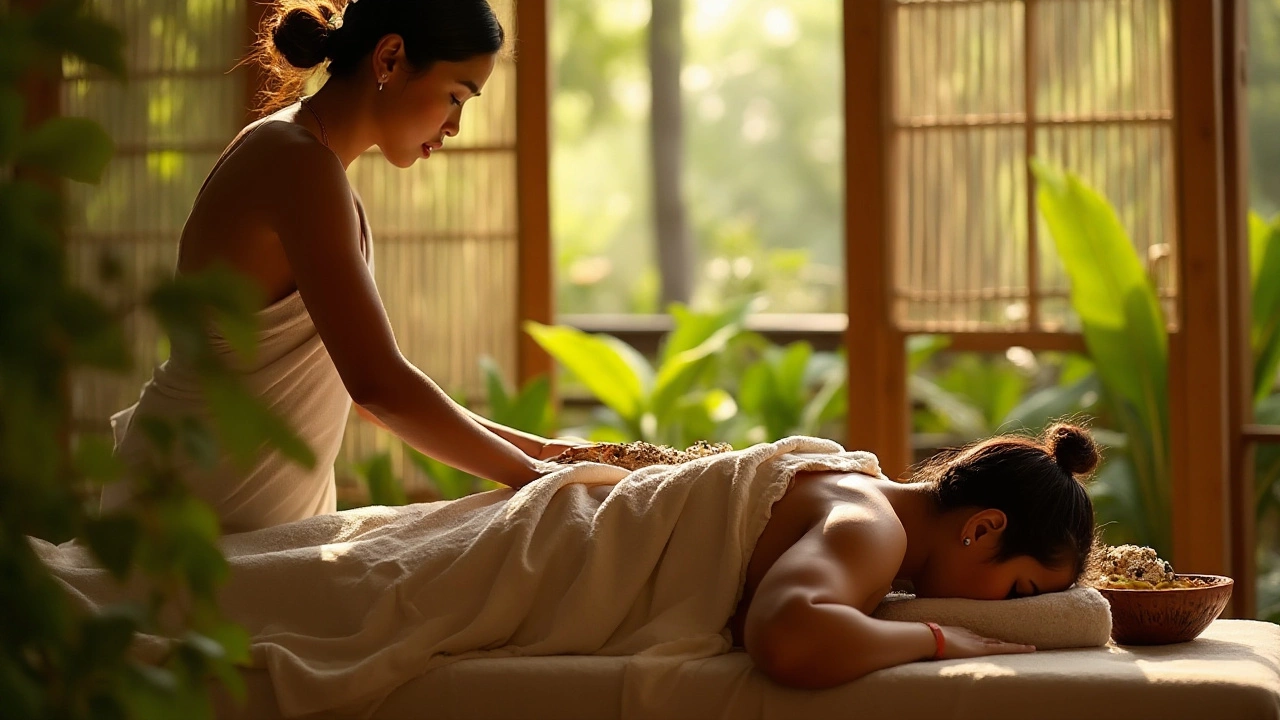An Ayurvedic massage is a holistic therapy aimed at rejuvenating the body and mind. Choosing the right attire plays a crucial role in the comfort and effectiveness of the therapy. Loose, comfortable clothing made from natural fibers is often recommended to allow ease of movement and absorption of oils. This article explores what to wear during an Ayurvedic massage, considering both traditional and modern practices, to enhance the healing experience.
Read MoreAyurvedic Massage: What It Is and Why It Works
Ayurvedic massage is a centuries‑old practice that uses warm oils, gentle strokes and dosha‑specific techniques to calm the body and mind. It’s not just a spa treat – it’s a healing tool that can cut joint pain, ease stress and improve digestion.
Key Benefits of Ayurvedic Massage
First, the oil helps the skin absorb nutrients while the massage moves stagnated blood, reducing inflammation. Second, each dosha (Vata, Pitta, Kapha) has a recommended oil and pressure pattern, so the treatment can balance your unique mind‑body makeup. Third, regular sessions boost lymphatic flow, which means fewer colds and faster recovery after an injury. Finally, the calming rhythm lowers cortisol, so you sleep better and feel more energetic during the day.
How to Give Yourself an Ayurvedic Massage
Start with the right oil. For Vata, choose sesame oil mixed with a few drops of lavender. Pitta does best with coconut oil and a hint of sandalwood. Kapha benefits from mustard or almond oil blended with eucalyptus. Warm the oil to body temperature – a quick microwave burst works.
Next, set a peaceful space. Dim the lights, play soft music, and keep the room at a comfortable temperature. Lay a mat or towel on the floor, or sit on a sturdy chair if you prefer.
Begin with your feet. Pour a small amount of oil onto your palms and rub them together. Stroke each foot from the toes up to the ankle, using firm but smooth pressure. Spend about two minutes per foot, focusing on any tight spots.
Move up to the calves and thighs. Use long, sweeping motions that follow the direction of blood flow – from the ankle toward the heart. For Vata, keep the strokes slower; for Pitta, use a moderate pace; for Kapha, apply slightly deeper pressure.
When you reach the abdomen, apply gentle circular motions clockwise. This helps digestion and detoxifies the liver. Keep the pressure light – the goal is to warm the area, not bruise it.
Finish with the arms, hands and neck. Mirror the leg technique: long strokes for the arms, kneading for the palms, and soft circles around the neck and shoulders. End with a few gentle taps on the scalp to stimulate energy flow.
After the massage, wipe off excess oil with a warm towel and drink a glass of warm water with a pinch of turmeric. This seals the benefits and keeps you hydrated.
Doing this routine two to three times a week can quickly reduce chronic aches, clear mental fog and keep your doshas in harmony. If you have a specific condition like arthritis or back pain, consult an Ayurvedic practitioner to tailor the oil and pressure to your needs.
Remember, consistency beats intensity. A short, mindful session every few days is more effective than a long, occasional one. So grab your favorite oil, set the mood, and let the ancient wisdom of Ayurveda work its magic on your body today.





